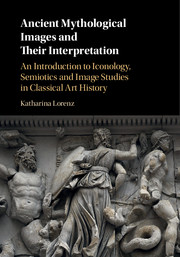 Ancient Mythological Images and their Interpretation
Ancient Mythological Images and their Interpretation Bibliography
Published online by Cambridge University Press: 05 August 2016
- Type
- Chapter
- Information
- Ancient Mythological Images and their InterpretationAn Introduction to Iconology, Semiotics and Image Studies in Classical Art History, pp. 246 - 281Publisher: Cambridge University PressPrint publication year: 2016


